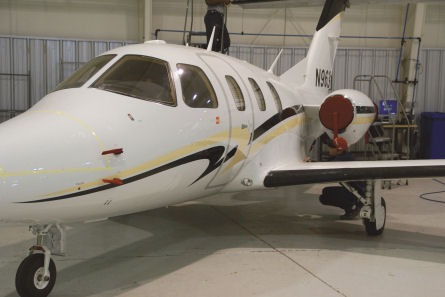A recurring problem with the Pratt & Whitney Canada PW610F-A engines powering the Eclipse 500 very light jet is behind a new mandate that will prevent operators of 259 US-registered twinjets from flying higher than 30,000ft (11,280m) as of 21 March.
The Federal Aviation Administration airworthiness directive supersedes a 2008 mandate that limited the aircraft from flying higher than 37,000ft, 4,000ft below its maximum certificated altitude of 41,000ft.
That directive was prompted by "several" incidents in which the 900lb-thrust (4kN) engines surged due to hard carbon build-up in the combustors, a problem that requires pilots to reduce thrust on the affected engine.
 |
|---|
"The unsafe condition of engine surges due to hard carbon build-up blocking the static vanes has continued to occur at 37,000ft altitude and lower," says the FAA in the 10 March final AD announcement. "Six known events have occurred, five of which were at or below 37,000ft altitude and four of which were in a two-week period."
Impacts include having to reduce thrust or having to shut down the affected engine, says the FAA. "It is also possible that this could affect both engines at the same time, requiring dual engine shutdown".
As in its 2008 AD, the FAA says the altitude limitation remains an interim action while Pratt & Whitney Canada and Canadian regulators develop solutions.
P&WC says the issue occurs "in certain operational conditions on some aircraft" when flying above 30,000ft for more than 75min.
The engine-maker says a new combustor liner it developed and tested with airframer Eclipse Aerospace to prevent the build-up recently completed final development testing "and the certification process is now under way".
As for the existing fleet, P&WC says operational recommendations it developed previously with Eclipse, Transport Canada and the FAA remain valid. Those include "respecting a reasonable cruise time limitation of 75min when operating above 30,000ft", says P&WC.
Source: Flight International



















